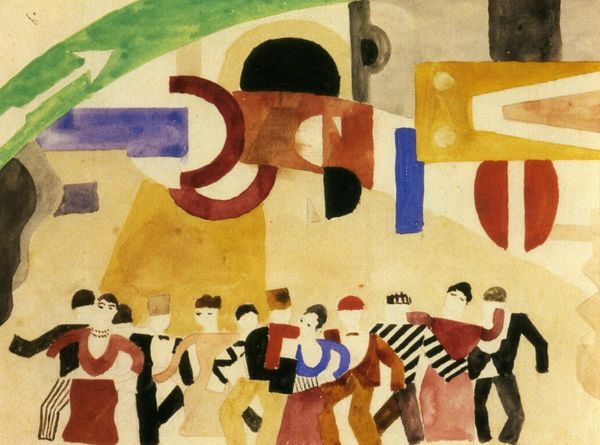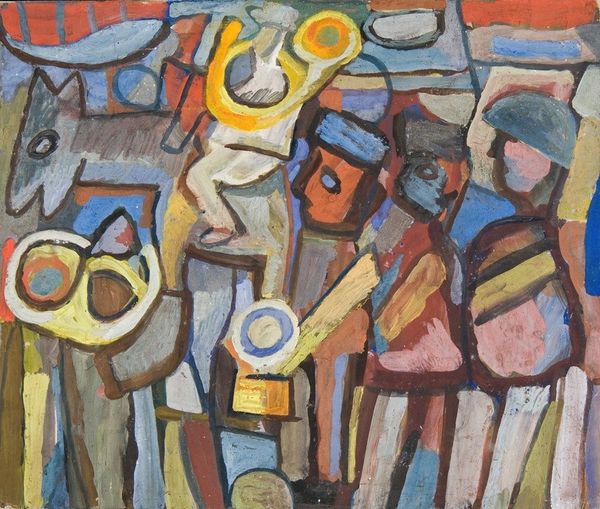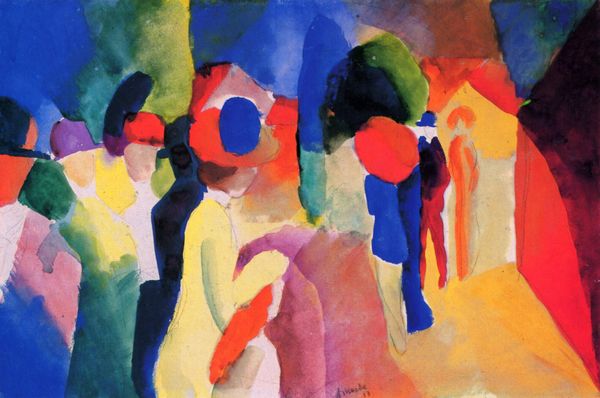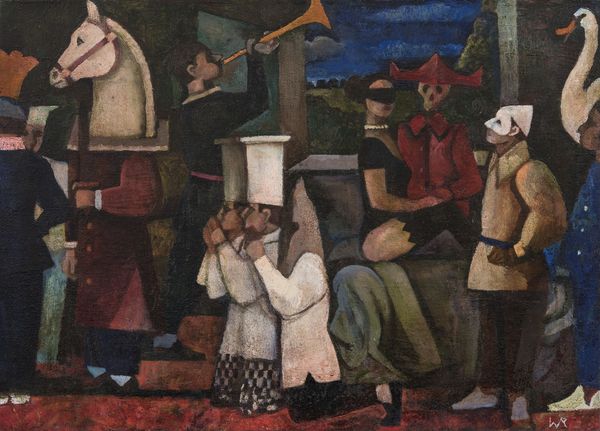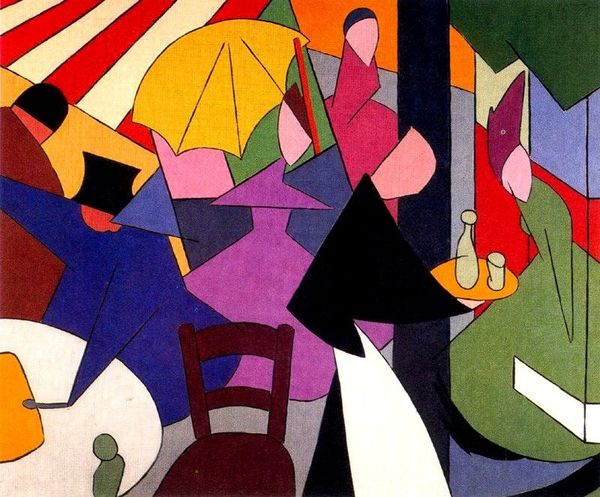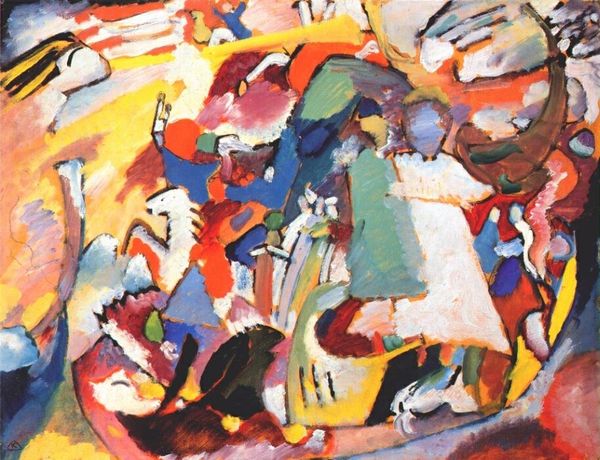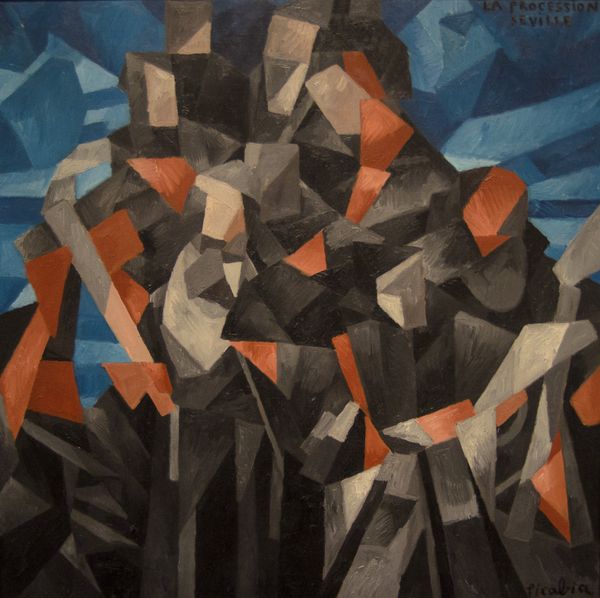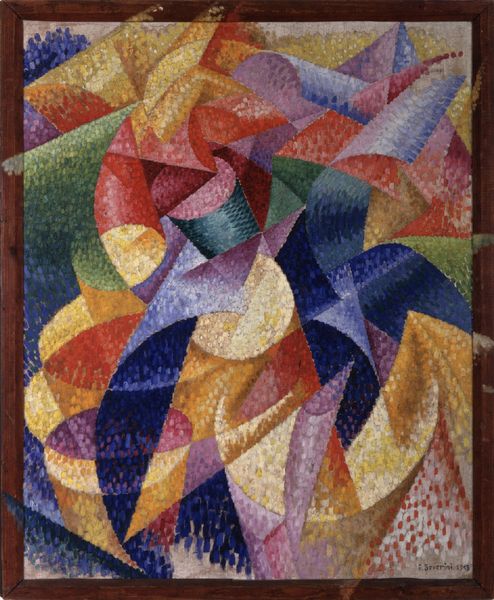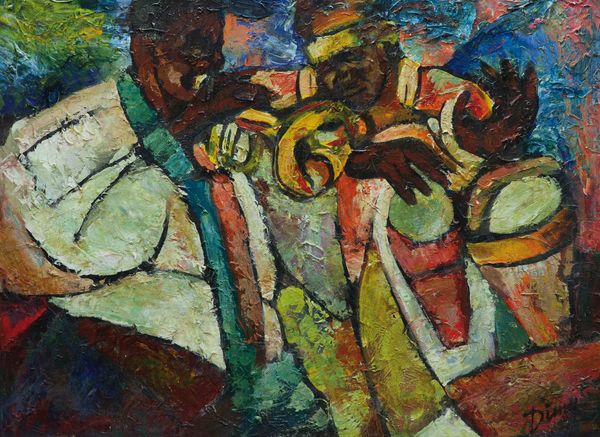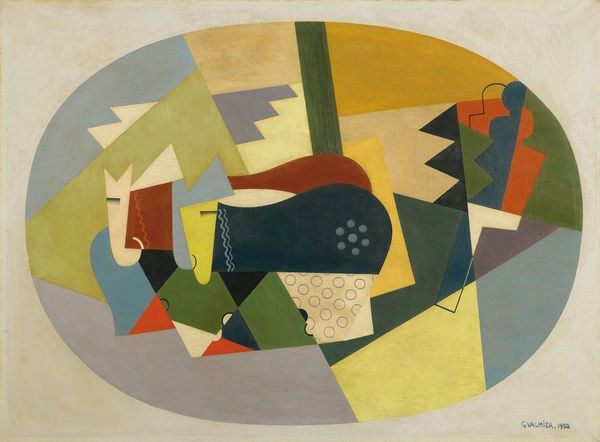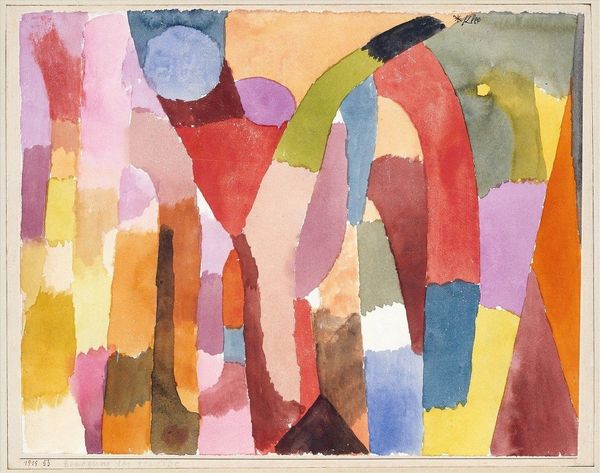
Copyright: © The estate of John Dodgson | CC-BY-NC-ND 4.0 DEED, Photo: Tate
Editor: Wow, this makes me feel a little claustrophobic. It's like being swallowed by a crowd, all those hats! Curator: Indeed! This is John Dodgson's "Market Place," currently held at the Tate. Dodgson, who lived from 1890 to 1969, captured a fascinating scene, focusing on the collective experience of a marketplace. Editor: It’s a buzzing sea of humanity. I wonder what they're all looking at? The colors are so muted, and yet there's this intense energy. Like a low hum that vibrates in your chest. Curator: Precisely. The perspective, intentionally flattened, emphasizes the shared space, echoing theories of collective identity and the individual lost within the mass. Editor: There's something very human about it. I mean, that slightly awkward feeling of being shoulder-to-shoulder with strangers is captured beautifully. Curator: I think what Dodgson achieves here, by simplifying the forms and prioritizing the mass, is a powerful comment on the nature of public life. Editor: Well, whatever it is, I'm ready for a quiet cup of tea. This crowd is making me thirsty. Curator: I agree. It does invite a moment of reflection on our own place within the collective.
Comments
Join the conversation
Join millions of artists and users on Artera today and experience the ultimate creative platform.
tate 6 months ago
⋮
Market Place reveals Dodgson's fascination with the exotic. The uncharacteristically bright colours together with the title suggest that this is a painting of an Eastern bazaar, with figures swathed in rich draperies walking through a sunlit street. In fact the painting derived from a biblical scene and to reach a full understanding of how the painting came about one must consider the two accompanying drawings (Tate T07568 and Tate T07569). These drawings show the work in progress. One work (Tate T07568) shows two squared-up drawings on a page from a sketchbook which directly precede the large painting. The forms of the heads and faces in the crowded street are more clearly defined and the perspective more clearly visible. The other drawing (Tate T07569) is on tracing paper and is also squared-up and provides the clue to the original subject. On one side is a small drawing which appears immediately to precede the sketchbook grids. On the other side, and in reverse, is a larger drawing. It becomes clear that the composition for the final paintings is derived from this larger, more legible, picture. In this version the bearded man with a hat is facing a woman in a veil who holds a tiny baby. On the opposite side of the picture is a woman wearing a modern hat. A fourth figure, who appears to be looking at the child, can be seen over the bearded man's shoulder. The side wall of a house and a view of a distant landscape complete the scene. Instinctive readings lead the viewer to connect this image with representations of the Holy Family. An unfinished painting (private collection) completes the story. Bearing the title Flight into Egypt, this painting shows the figures, this time minus the second male figure in the foreground, but including instead a distant figure saddling a donkey, depicted in colours traditionally associated with images of this subject. Dodgson had very specific feelings about painting religious images. While he was very moved by religious scenes, he maintained a distance from conventional belief, which he felt to be unnecessary and cumbersome. It was perhaps for this reason that he was so drawn to the work of Piero della Francesca (1410/20-92). He admired Piero's ability to paint religious imagery in a beautiful and moving yet unsentimental manner. In this instance it is thought that Dodgson may have been influenced by Luca Signorelli (c.1441/50-1523), Heads of Men (Louvre, Paris) (Pery, p.29). Market Place is unusual because its evolution is so well-documented. Dodgson's process is laid bare, as much of the compositional process took place before the work was committed to canvas. It is also of particular interest because it includes references to European art history, which one would associate with Dodgson, while also revealing a personal fascination with the exotic delights associated with markets and the crowd, which may draw on memories of his childhood in India. Further reading:Jenny Pery, John Dodgson: Paintings and Drawings, The Fine Art Society, London 1995, no.41, reproduced p.21, in colour. Chloe JohnsonSeptember 2001
